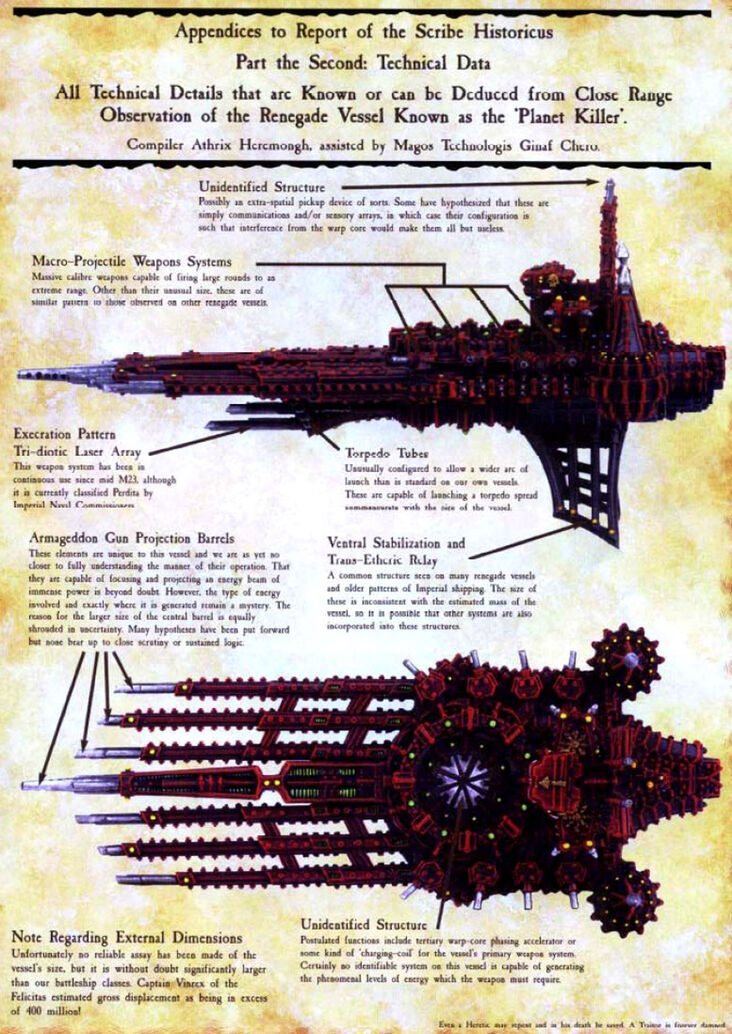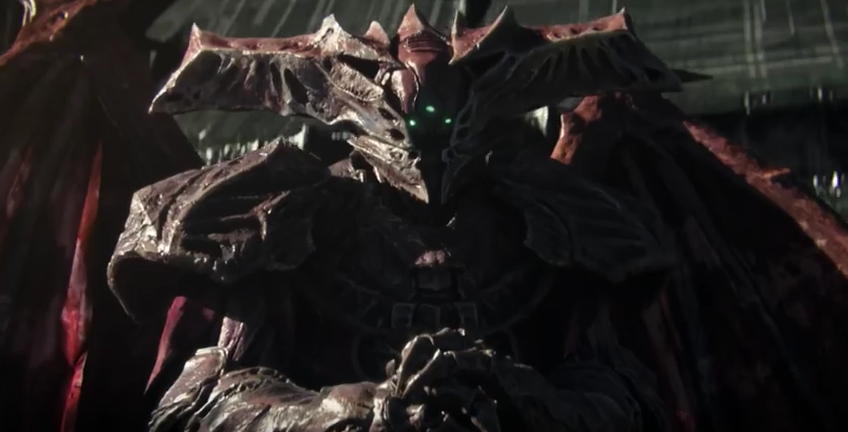-
Hey, guest user. Hope you're enjoying NeoGAF! Have you considered registering for an account? Come join us and add your take to the daily discourse.
You are using an out of date browser. It may not display this or other websites correctly.
You should upgrade or use an alternative browser.
You should upgrade or use an alternative browser.
Something mysterious is killing 11,000 nearby galaxies
- Thread starter Fuu
- Start date
- Status
- Not open for further replies.
The Eye of Terror is expanding.
The God Emperor is faltering on his Golden Throne.
My bet is Necrons.

LordOfChaos
Member
The photino birds are winning against the Xeelee in those galaxies.
efyu_lemonardo
May I have a cookie?
If this is widespread and cuts the potential 'lifespan' of these galaxies by a significant amount, wouldn't it mean that our current models of the long-term future of the universe are wrong by a few billion years?
I'm not a physicist, but that seems like the logical conclusion.
capitalCORN
Member
Maybe we're overdoing the warpspeed travel, guys.
Omegasquash
Member
If this is widespread and cuts the potential 'lifespan' of these galaxies by a significant amount, wouldn't it mean that our current models of the long-term future of the universe are wrong by a few billion years?
Possibly. I don't have the time on hand during the day today to read through the study completely, but at a glance it appears probable. No new stars in that galaxy, but with all that gas, maybe new stars/galaxies would be sparked, so to speak.
GifGafIsTheBestGaf
Member
that sounds cool and scary as shit, like what does it do with all that gas and energy they suck? does it make it grow?
LordOfChaos
Member
Maybe we're overdoing the warpspeed travel, guys.
Time to construct Probability mirrors for large-scale causal reconciliation.
https://www.halopedia.org/Probability_mirror
Curt Baboon
Member
Damn if broly
The only things left in his wake were energy drinks and torn TAPOUT tees.
Breakfast at Noon
Member
Maybe our host has cancer.
everyday math
Banned
Thats actually pretty scary
damn halo 6 viral marketing is starting early.
lol i was thinking the same. Damn flood
sleverfunk
Member
God Emperor Doom help us.
LordOfChaos
Member
lol i was thinking the same. Damn flood
I really hope that's the Halo endgame, the Precursor trilogy of books (excellent, must read!) set up the second judgement of the Floodcursors, which the relatively tiny outbreak surely wasn't.
Extra Sauce
Member

It's Remina.
Would.
psynergylover
Member
he cometh


Ok, well no one else has posted it...
Actually reading the article this sounds like one of those fun facts that doesn't really matter, the same way our sun will eventually expire long after humans or whatever we evolve into will probably have met our fate.
Actually reading the article this sounds like one of those fun facts that doesn't really matter, the same way our sun will eventually expire long after humans or whatever we evolve into will probably have met our fate.
WhiteRabbitEXE
Member
Literally about galaxy destroying halos and there's all of like 3 Halo references in this thread. GAF is anti-MS confirmed.
All Possible Ways
Member
Ok, I will try to explain this as best as I can.
All galaxies have roughly spherical halo of Dark Matter around them. This extra mass is enough to account for the anomalous rotation curves of galaxies, which show that the luminous matter in the form of stars and gas is not enough to account for the large rotation speed of the galaxy far from the center.
This paper refers to satellite galaxies. As the name indicates, these are galaxies that are orbiting a larger galaxy. An example being the Large Magellanic Cloud, which is a satellite of the Milky Way.
These satellite galaxies are moving in the larger Dark Matter Halo that envelops the galaxy they are orbiting, and in moving through this medium they interact with each other and the surrounding interstellar gas.
What this paper shows is that satellite galaxies in denser halos tend to have less gas in them, which quenches star formation. The hypothesis is that this gas was stripped as the galaxy plunges though the intergalatic medium, which is full of very very hot (T~10^7 K), tenuous and very very tenous gas (density~10^(-4) cm^3). The effect is analogous to what happens to a meteorite when it rams into our atmosphere.
Now, this does not mean that the Dark Matter is directly stripping the gas, which cannot happen, since by interactions between DM and ordinary matter are only gravitational, and so very weak. What seems to be happening is that in denser haloes, the gravitational force on the satellite galaxies is larger and so the galaxies tend to move through the medium at a faster speed, increasing the friction and the stripping of their gas. Galaxies with less gas in them have less material to make new stars with, hence, their "death".
Needless to say, don't panic, this has nothing to do with doomsday scenarios and even if it was happening to the Milky Way, you wouldn't even notice it.
All galaxies have roughly spherical halo of Dark Matter around them. This extra mass is enough to account for the anomalous rotation curves of galaxies, which show that the luminous matter in the form of stars and gas is not enough to account for the large rotation speed of the galaxy far from the center.
This paper refers to satellite galaxies. As the name indicates, these are galaxies that are orbiting a larger galaxy. An example being the Large Magellanic Cloud, which is a satellite of the Milky Way.
These satellite galaxies are moving in the larger Dark Matter Halo that envelops the galaxy they are orbiting, and in moving through this medium they interact with each other and the surrounding interstellar gas.
What this paper shows is that satellite galaxies in denser halos tend to have less gas in them, which quenches star formation. The hypothesis is that this gas was stripped as the galaxy plunges though the intergalatic medium, which is full of very very hot (T~10^7 K), tenuous and very very tenous gas (density~10^(-4) cm^3). The effect is analogous to what happens to a meteorite when it rams into our atmosphere.
Now, this does not mean that the Dark Matter is directly stripping the gas, which cannot happen, since by interactions between DM and ordinary matter are only gravitational, and so very weak. What seems to be happening is that in denser haloes, the gravitational force on the satellite galaxies is larger and so the galaxies tend to move through the medium at a faster speed, increasing the friction and the stripping of their gas. Galaxies with less gas in them have less material to make new stars with, hence, their "death".
Needless to say, don't panic, this has nothing to do with doomsday scenarios and even if it was happening to the Milky Way, you wouldn't even notice it.
My bet is Necrons.

That's a Chaos vessel.
Android18a
Member
Cadia has fallen.
WeAreStarStuff
Member
I immediately thought of this video by Kurzgesagt about Vacuum Decay:
https://www.youtube.com/watch?v=ijFm6DxNVyI
https://www.youtube.com/watch?v=ijFm6DxNVyI
Ok, I will try to explain this as best as I can.
All galaxies have roughly spherical halo of Dark Matter around them. This extra mass is enough to account for the anomalous rotation curves of galaxies, which show that the luminous matter in the form of stars and gas is not enough to account for the large rotation speed of the galaxy far from the center.
This paper refers to satellite galaxies. As the name indicates, these are galaxies that are orbiting a larger galaxy. An example being the Large Magellanic Cloud, which is a satellite of the Milky Way.
These satellite galaxies are moving in the larger Dark Matter Halo that envelops the galaxy they are orbiting, and in moving through this medium they interact with each other and the surrounding interstellar gas.
What this paper shows is that satellite galaxies in denser halos tend
to have less gas in them, which quenches star formation. The hypothesis is that this gas was stripped as the galaxy plunges though the intergalatic medium, which is full of very very hot (T~10^7 K), tenuous and very very tenous gas (density~10^4 cm^3). The effect is analogous to what happens to a meteorite when it rams into our atmosphere.
Now, this does not mean that the Dark Matter is directly stripping the gas, which cannot happen, since by interactions between DM and ordinary matter are only gravitational, and so very weak. What seems to be happening is that in denser haloes, the gravitational force on the satellite galaxies is larger and so the galaxies tend to move through the medium at a faster speed, increasing the friction and the stripping of their gas. Galaxies with less gas in them have less material to make new stars with, hence, their "death".
Needless to say, don't panic, this has nothing to do with doomsday scenarios and even if it was happening to the Milky Way, you wouldn't even notice it.
WE'RE DOOMED!!! DOOMED, I TELL 'YA!!!
It took 3 pages for an actual post xdOk, I will try to explain this as best as I can.
All galaxies have roughly spherical halo of Dark Matter around them. This extra mass is enough to account for the anomalous rotation curves of galaxies, which show that the luminous matter in the form of stars and gas is not enough to account for the large rotation speed of the galaxy far from the center.
This paper refers to satellite galaxies. As the name indicates, these are galaxies that are orbiting a larger galaxy. An example being the Large Magellanic Cloud, which is a satellite of the Milky Way.
These satellite galaxies are moving in the larger Dark Matter Halo that envelops the galaxy they are orbiting, and in moving through this medium they interact with each other and the surrounding interstellar gas.
What this paper shows is that satellite galaxies in denser halos tend
to have less gas in them, which quenches star formation. The hypothesis is that this gas was stripped as the galaxy plunges though the intergalatic medium, which is full of very very hot (T~10^7 K), tenuous and very very tenous gas (density~10^4 cm^3). The effect is analogous to what happens to a meteorite when it rams into our atmosphere.
Now, this does not mean that the Dark Matter is directly stripping the gas, which cannot happen, since by interactions between DM and ordinary matter are only gravitational, and so very weak. What seems to be happening is that in denser haloes, the gravitational force on the satellite galaxies is larger and so the galaxies tend to move through the medium at a faster speed, increasing the friction and the stripping of their gas. Galaxies with less gas in them have less material to make new stars with, hence, their "death".
Needless to say, don't panic, this has nothing to do with doomsday scenarios and even if it was happening to the Milky Way, you wouldn't even notice it.
WhiteRabbitEXE
Member
Nah, the real concern would be a gamma ray burst.We could get wiped out just like that.
torre_avenue
Banned
Elon Musk to begin work on Ultimate Nullifier.
Oh wow, first time seeing this. On 2D field view, this is legit terrifying.Eye of Terror?
If only the reality were so kind.

It also makes the whole 'tendril' description make a lot more sense.
Vulcano's assistant
Banned
Oh no its "reference to villainous sci-fi race"
And actually only ever seen having an impact that is diminute compared to the events described
VaultBoy101
Member
Scorpio
All Possible Ways
Member
I immediately thought of this video by Kurzgesagt about Vacuum Decay:
https://www.youtube.com/watch?v=ijFm6DxNVyI
This is something else entirely, and the chance of it happening is essentially zero. More than anything, it is a theoretical requirement that your model doesn't lead to vacuum decay on a time scale shorter than the observed lifetime of the Universe.
Always-honest
Banned
Holy shit
Edit: nothing to worry about
Edit: nothing to worry about
TheStruggler
Report me for trolling ND/TLoU2 threads
Wall-E has seen some shit
Icyflamez96
Member
Beerus the destroyer has awoken.
Which will destroy us faster? Trump or the halo?
Honestly armor lock is not that big of a deal.
- Status
- Not open for further replies.







